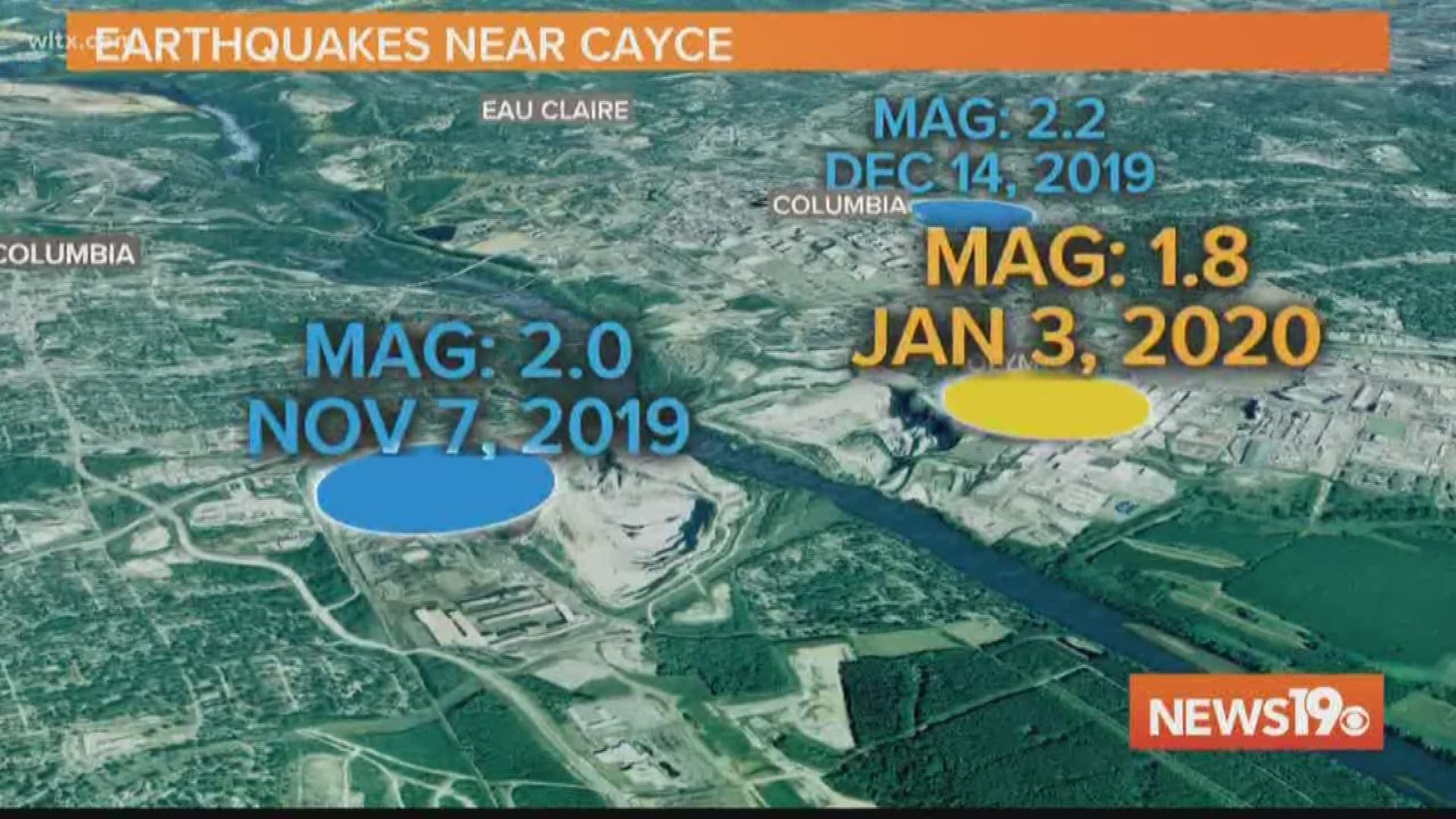COLUMBIA, S.C. — Three earthquakes have struck the Cayce area three times within the last two months.
The U.S. Geological Survey says the 1.8 magnitude tremor was recorded at 12:03 a.m. on January 3 in Cayce, but the exact coordinates show it was on the Richland County side of the Congaree River near the quarry.
Since most earthquakes have to be a 2.5 magnitude to feel anything, it's unlikely anyone knew an earthquake took place.
A 2.0 earthquake struck there back on November 7. A 2.5 magnitude quake struck on December 14.
Some people in the Columbia community have asked if they should be concerned there's been this many earthquakes around this area in a short amount of time.
Thomas Owens, a professor at the University of South Carolina who specializes in geophysics and seismology and tectonics, says this isn't something to worry about.
"No, I would not be concerned. Short sequences of microearthquakes occur in central and upstate South Carolina from time to time. The most recent one, I think, was up in the Pageland area in late 2017 when a few earthquakes occurred in the area over a 6-ish month period and then stopped. This also occurs from time to time up in the Jenkinsville area."
Ownes says what's causing the sequence of microearthquakes is the slow accumulation of stress associated with the North American tectonic plate.
"These 'intraplate' earthquakes occur when sufficient stress accumulates on favorably oriented existing faults. These need not be "fault lines" in the sense that most people think of them. Studies in South Carolina have also suggested that small faults or fractures surrounding the very old granitic plutons that exist in South Carolina are favorable setting for these microearthquakes."
Back in 1886, Charleston was hit by a catastrophic earthquake. It had an estimated magnitude of 7.3, and was felt as far away and Cuba and New York. At least 60 people were killed, and thousands of building were damaged.
Structural damage extended hundreds of miles to cities in Alabama, Ohio, and Kentucky.
Geologists say that Charleston lies in one of the most seismically active areas in the eastern United States.
Owens says he would be no more surprised if there were no earthquakes in the area in the next 20 years than he would be if a few more occurred this year.

